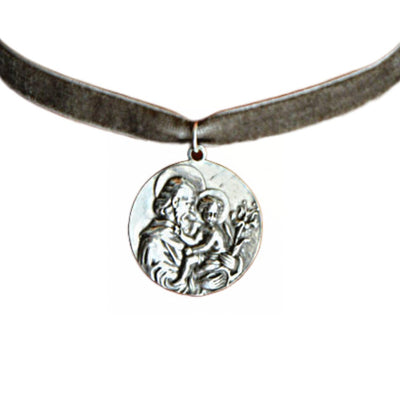Christmas in Mexico
Christmas in Mexico is more than just a holiday; it's a vibrant and lively celebration from December 12th to January 6th. Let's journey through the rich tapestry of Mexican Christmas traditions, from Posadas to piñatas and everything in between.
Posadas: A Journey to Bethlehem 🚶♂️🚶♀️
From December 16th to Christmas Eve, children across Mexico participate in the heartwarming 'Posada' processions or Posadas. Posada, which means 'Inn' or 'Lodging' in Spanish, consists of nine separate celebrations. These events commemorate Joseph and Mary's quest for a place to stay in Bethlehem.

The exterior of houses comes alive with decorations of evergreens, moss, and paper lanterns, casting a festive glow on the streets. To symbolize 'lighting the way,' luminarias or farolitos, paper sacks with intricate cutout designs and candles inside guide the path for Mary and Joseph.
In each Posada, children carry candles and a board adorned with clay figures of Mary riding a donkey and Joseph. They visit the homes of friends and neighbors, singing songs about Joseph and Mary's search for lodging. Children experience the rejection Mary and Joseph faced until finally; they are welcomed into a home. Inside, prayers of gratitude are offered, followed by a joyous celebration featuring food, games, and fireworks.

The final Posada, held on Christmas Eve, is exceptional. A manger and figures of shepherds are placed on the board, and once the Posada house is found, baby Jesus is tenderly laid in the manger. Families then attend midnight Church services, marking the official start of Christmas with a dazzling fireworks display.

Piñatas: Fun and Sweet Surprises 🎉🍬
Piñatas are a beloved part of Posada parties in Mexico. These colorful decorations, often shaped like balls with seven peaks, represent the 'seven deadly sins.' Children take turns being blindfolded and trying to break the piñata open with a stick, eagerly gathering the sweets that spill out.

Pastorelas: Shepherds, Devils, and Angels 🐏👹👼
Another delightful tradition during Mexican Christmas celebrations is 'Pastorelas,' or the Shepherds' plays. These plays depict the shepherds' journey to find baby Jesus and are known for their humor. The devil, portrayed as a mischievous tempter, tries to thwart the shepherds' quest, but with the help of Archangel Michael, they always prevail, ensuring a happy ending.

Nacimiento: Elaborate Nativity Scenes 🎨🐑
The 'nacimiento,' or nativity scene, is a prominent feature in Mexican homes during Christmas. These scenes can be huge, sometimes taking up entire rooms. Traditionally crafted from clay, these figures have been passed down through generations. Alongside the standard nativity characters, you'll find various other figures, like people making tortillas, food vendors, and flamingos! The baby Jesus is placed in the scene on Christmas Eve and the Three Kings are added during Epiphany.

Food: A Feast for the Senses 🍲🍰🍷
Christmas Eve, known as 'Noche Buena,' is a time for family gatherings and sumptuous feasts—traditional dishes like Pozole, roast turkey, pork, tamales, and bacalao grace the dining tables. Side dishes like Ensalada Nochebuena complement these delights. Desserts include buñuelos, fried pastries sprinkled with sugar and cinnamon, or drenched in hot sugar syrup. Ponche, a warm Christmas punch, and Rompope, an eggnog-like drink with a touch of rum, complete the festive meal.

Midnight Mass and Fireworks 🌠🙏
At the stroke of midnight, many Mexicans attend the 'Misa de Gallo,' or Mass of the Rooster, with fireworks illuminating the night sky. Poinsettia flowers, known as 'Noche Buena,' add a touch of seasonal beauty to the celebrations.

Noche de Rábanos: A Radish Spectacle 🌿🎨
On December 23rd, Oaxaca City hosts the 'Noche de Rábanos,' the Night of the Radishes. This unique event features competitions where radishes are intricately carved to create scenes. The traditional category often includes nativity stories and local wildlife, while the free type allows for modern themes and political caricatures. Over 10 tons of radishes are used during this festival, highlighting the creativity and craftsmanship of the local community.
Mexican Christmas Legends 📜🌟
Mexican Christmas is steeped in legends and folklore. 'Los Santos Inocentes,' or 'Day of the Innocent Saints' on December 28th, bears a resemblance to April Fools' Day in the UK and USA, where playful pranks are shared. Additionally, children may expect gifts from Santa Claus on December 24th or the Three Kings on January 6th, known as 'el Dia de los Reyes.'

Epiphany and Rosca de Reyes: A Sweet Tradition 🍰🤴
Epiphany, celebrated on January 6th, involves the exchange of gifts brought by the Three Kings or Magi. A special cake called 'Rosca de Reyes' holds a hidden figurine of Baby Jesus. The person who finds it becomes the 'Godparent' of Jesus for the year, adding a charming twist to the festivities.

La Candelaria: A Festive Farewell 🕯️🎉
The Mexican Christmas celebrations conclude on February 2nd with 'La Candelaria' or 'Virgen de la Candelaria.' This marks the end of the holiday season, and Mexicans celebrate with parties and gatherings, bidding a fond farewell to the magic of Christmas.

Christmas is a time of unity, tradition, and joy in Mexico. As we explore these unique customs, it's evident that the spirit of Christmas brings families and communities together in a tapestry of love, faith, and celebration.




















Leave a comment